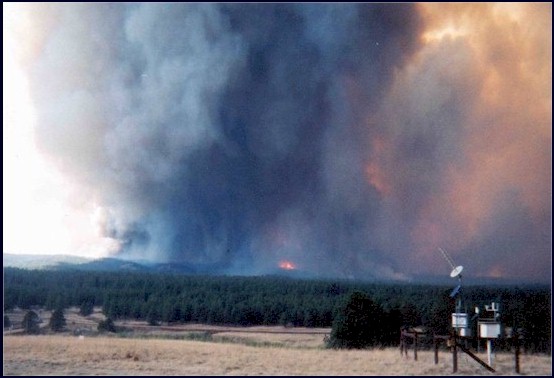As many in the western U.S. begin to brace themselves for the upcoming fire season, we are reminded of a gargantuan wildfire that recently had its 13-year anniversary.

On June 8, 2002, the human-caused Hayman Fire broke out 95 miles southwest of Denver. Allegedly ignited from a small, burning letter, and aided by a longstanding drought, the fire grew to unprecedented proportions, eventually engulfing four counties. In the wake of the devastation, approximately 133 homes were destroyed, more than 5,000 people were evacuated, and six lives. Incinerating more than 138,000 acres, the fire became the largest in Colorado history, inspiring the quote from then-governor Bill Owens, “it looks like all of Colorado is burning today.” The fire was contained on July 2, 2002, nearly a month after it began; it was finally controlled on July 18 of that year.
Beyond the devastating loss of life and the $42 million economic toll, the fire burned vast stands of aspen, spruce, Douglas-fir and ponderosa pine. This resulted in the destruction of an enormous amount of wildlife habitat, including the loss of winter roosting sites for approximately 20 to 40 local bald eagles. The fire consumed all but a few hundred of the 8,000 acres surrounding the Cheesman Reservoir, a primary watershed in the Denver area. In fact, nearly all of the trees burned in that area were killed as a direct result of the fire, and many stands were damaged beyond possible regeneration. As those who read this blog know, the loss of canopy cover directly affects many elements of water — including water quality, quantity, and storage capacity for the reservoir.
To begin addressing these negative impacts, American Forests partnered with several local organizations in 2004 to begin reforesting the area around the Cheesman Reservoir. In total, 24,000 ponderosa pines were planted around the reservoir, spearheading an initiative to maintain the integrity of Denver’s water supply. Noting that Rome wasn’t built in a day, we have continued reforesting after this catastrophic disaster for many years, including our projects in 2006, 2007 and 2009-2011.